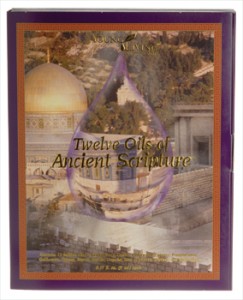Twelve Oils of Ancient Scripture: Onycha, Spikenard & Rose of Sharon
Less in known about onycha, spikenard, and rose of Sharon, but today, Gary Young imparts his knowledge of these precious oils of ancient scripture.
Onycha was a prized aromatic mentioned in Exodus 30:34: “And the Lord said unto Moses, Take unto thee sweet spices, stacte, and onycha, and galbanum; these sweet spices with pure frankincense: of each shall there be a like weight.”
A prized aromatic mentioned in Exodus 30:34, onycha stirred debate—whether it refers to a shellfish or a plant. The great Jewish scholar Rashi suggested that onycha is a kind of root, while the Talmud states it came from an annual plant. I believe that styrax benzoin may be the plant’s source for onycha. Like frankincense and myrrh, benzoin is a resin. Onycha was traditionally known for its comforting and soothing properties as well as its benefits for the skin. Ancient people used it to improve complexion and to help nourish the skin. Perhaps some of the beneficial aspects of benzoin were due to not only the oil itself, but also the other oils compounded with it.
Spikenard, which we read about in the New Testament in Mark 14:3, was transported to the Holy Land in sealed alabaster boxes all the way from the Himalayan Mountains. When a distinguished guest came visiting, the master of the home showed honor by breaking open a box of spikenard and anointing the guest. The Hebrews and the Romans also used spikenard in the burial of their dead. This is why Jesus said of the woman who poured the precious spikenard oil on him: “She has come aforehand to anoint my body to the burying.”
The rose of Sharon is believed to be ladinum, Cistus ladanifer. This herb was imported into ancient Egypt from the island of Crete in the Mediterranean Sea. The resin, which collected on the leaves, was treasured for its distinctive aromatic and therapeutic properties. The scriptural reference of rose of Sharon is in Solomon 2:1 where it says “I am the rose of Sharon, and the lily of the valleys.” The beautiful oil of cistus has a soft, honey-like scent. And cistus may be the small shrub tree called the rose of Sharon. Anciently it was referred to as the lily of the valley. Traditionally, cistus was used to stop bleeding and promoted cell regeneration, although no modern evidence has yet substantiated this.
There’s still more to come! Next, I’ll address some of the historical uses of myrtle and hyssop. I hope you’ll join me.
Essentially Yours,
Gary Young


Would you like to share your thoughts?
Your email address will not be published. Required fields are marked *